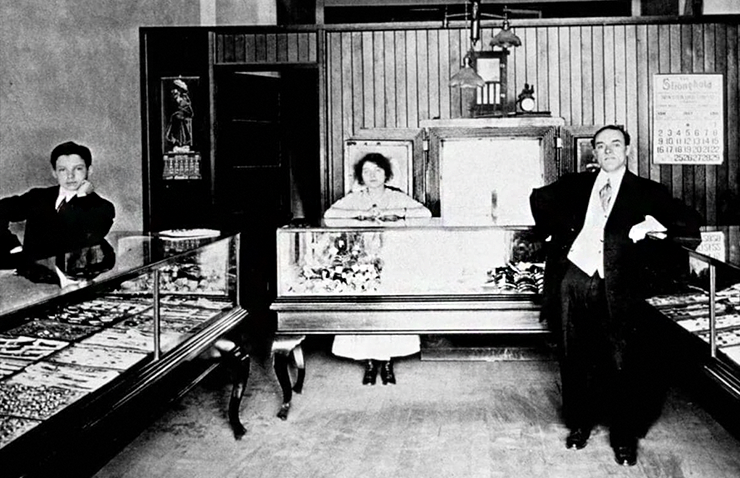
Harry Winston (1 March 1896 – 8 December 1978) was an American jeweler and businessman often referred to as “The King of Diamonds.” His legacy in the world of luxury jewelry remains unparalleled. Born in New York City to a Jewish immigrant family, Winston developed an early fascination for gemstones and diamonds. This passion and his innate talent for understanding precious stones eventually led to the founding of the world-renowned brand “Harry Winston”, a name synonymous with luxury, craftsmanship, and timeless elegance.
Winston’s affinity for gems began at a remarkably young age. His father, Jacob Winston, owned a small jewelry store where Harry first encountered precious stones. By the age of twelve, he had already demonstrated a keen eye for gems when he spotted a 2-carat emerald in a pawnshop window, which he bought for 25 cents. Within two days, he sold it for $800, marking the beginning of his illustrious career. This early success was a testament to his extraordinary ability to recognize value and beauty in gemstones, a skill that would become the cornerstone of his business.
In 1920, after gaining experience working in his father’s shop, Winston founded his own company called “Premier Diamond Company”. He was quick to establish a reputation for acquiring and transforming estate jewelry. Winston’s business model was innovative—he sought out vintage and estate jewelry pieces, redesigned them to highlight the stones, and sold them as new creations. His unique approach not only set him apart but also elevated his status among wealthy clients who desired unique, high-quality jewelry.
Winston’s name soon became associated with some of the most famous and historic diamonds in the world. He had a remarkable ability to acquire legendary stones, often from estates or auctions, and then transform them into breathtaking pieces. One of his most notable acquisitions was the Jonker diamond in 1934, a rough 726-carat stone discovered in South Africa. Winston purchased the diamond and entrusted his master cutters to transform it into several flawless gems, a move that garnered international attention.
In 1949, Winston’s purchase of the Hope Diamond, one of the most famous gems in history, solidified his place as a legend in the jewelry world. He acquired the blue diamond from the estate of socialite Evalyn Walsh McLean, who had owned it since 1911. Unlike others, Winston did not keep the diamond for his personal collection; instead, he famously donated it to the Smithsonian Institution in 1958, mailing it in a simple brown paper package. This gesture not only reflected his generosity but also his desire to educate the public about the beauty and history of gemstones.
Winston’s influence extended far beyond his remarkable acquisitions. He was a pioneer in the way jewelry was presented and perceived, both by his elite clients and the general public. In the 1940s, he was the first jeweler to loan diamonds to actresses for red-carpet events, starting a trend that would become a Hollywood staple. This marketing strategy, showcasing his jewels on the world’s most glamorous women, helped build an association between Harry Winston and luxury, glamour, and exclusivity. It also cemented his reputation as the jeweler of the stars.
Over the years, his client list grew to include royalty, celebrities, and influential figures worldwide. His company crafted iconic pieces for Elizabeth Taylor, the Duchess of Windsor, and Jacqueline Kennedy Onassis. Winston’s mastery lay not just in acquiring rare stones but in his ability to design settings that showcased the natural beauty and brilliance of each gem. His creations emphasized simplicity, elegance, and timeless design, which resonated with his sophisticated clientele.
Winston’s legacy is not merely about the diamonds and jewels he acquired but also about his contributions to the industry. He was known for his philanthropy and commitment to gemological education. His donation of the Hope Diamond was a prime example of his belief in making precious stones accessible to the public and preserving history. Winston’s impact on the jewelry industry also included advancements in gem-cutting techniques and design, setting standards that continue to influence modern jewelry houses.
Even after his death on 8 December 1978, Harry Winston’s name remains synonymous with opulence and excellence in the world of luxury jewelry.
The post Harry Winston appeared first on The Fashiongton Post.
